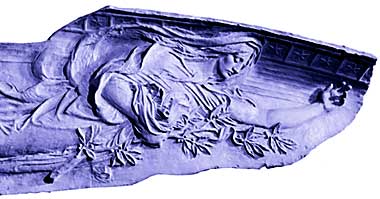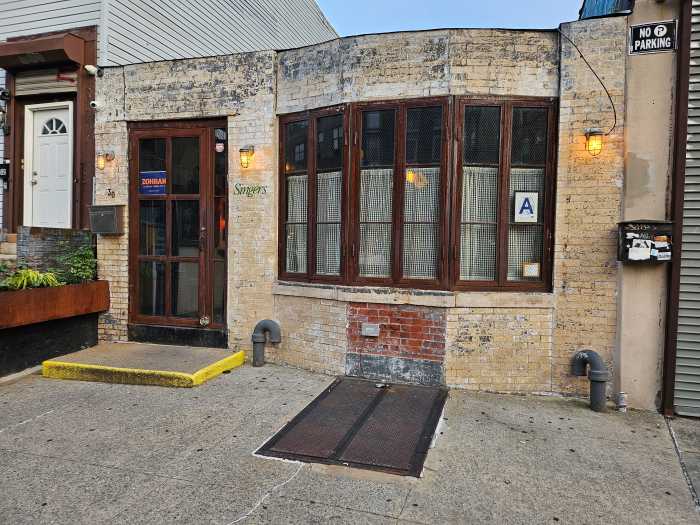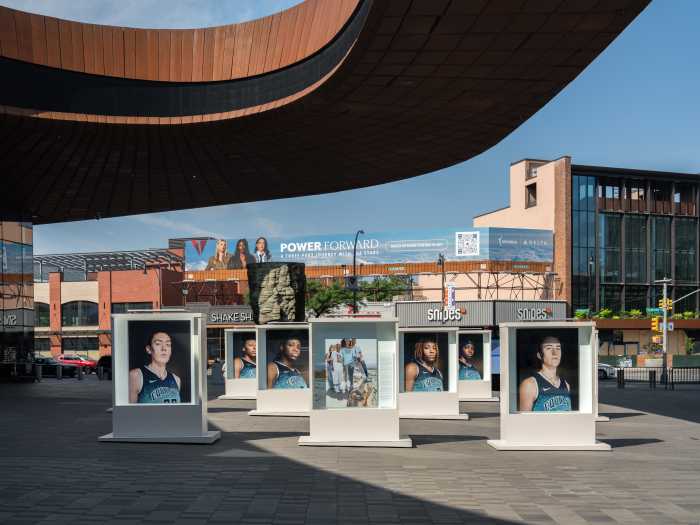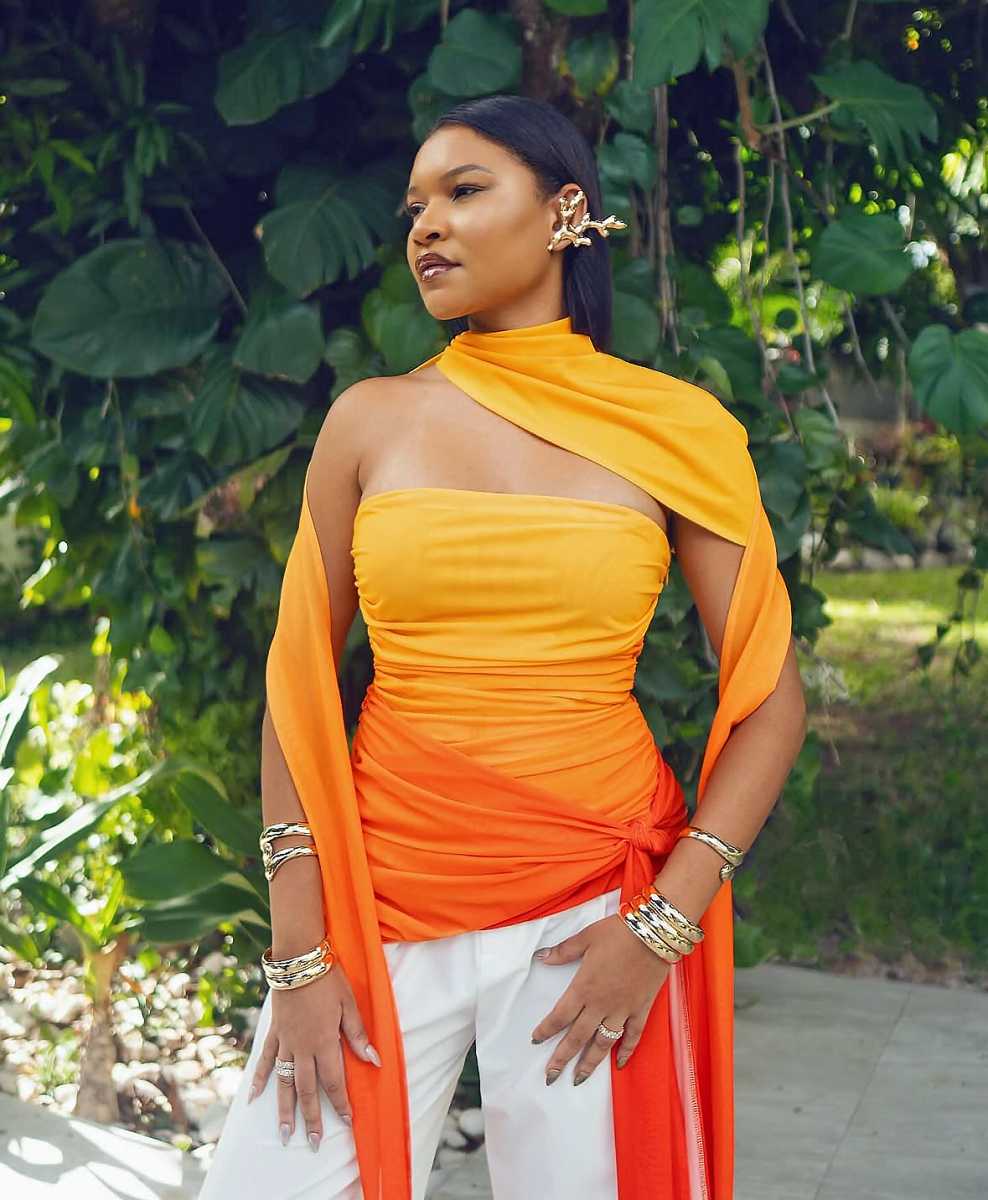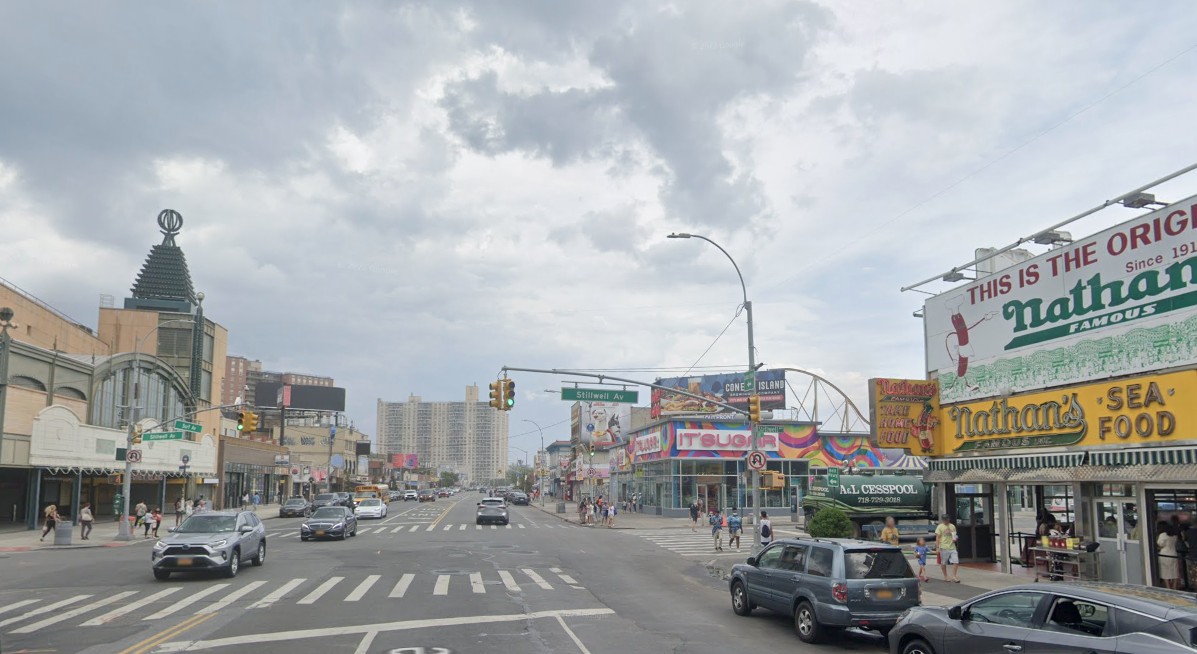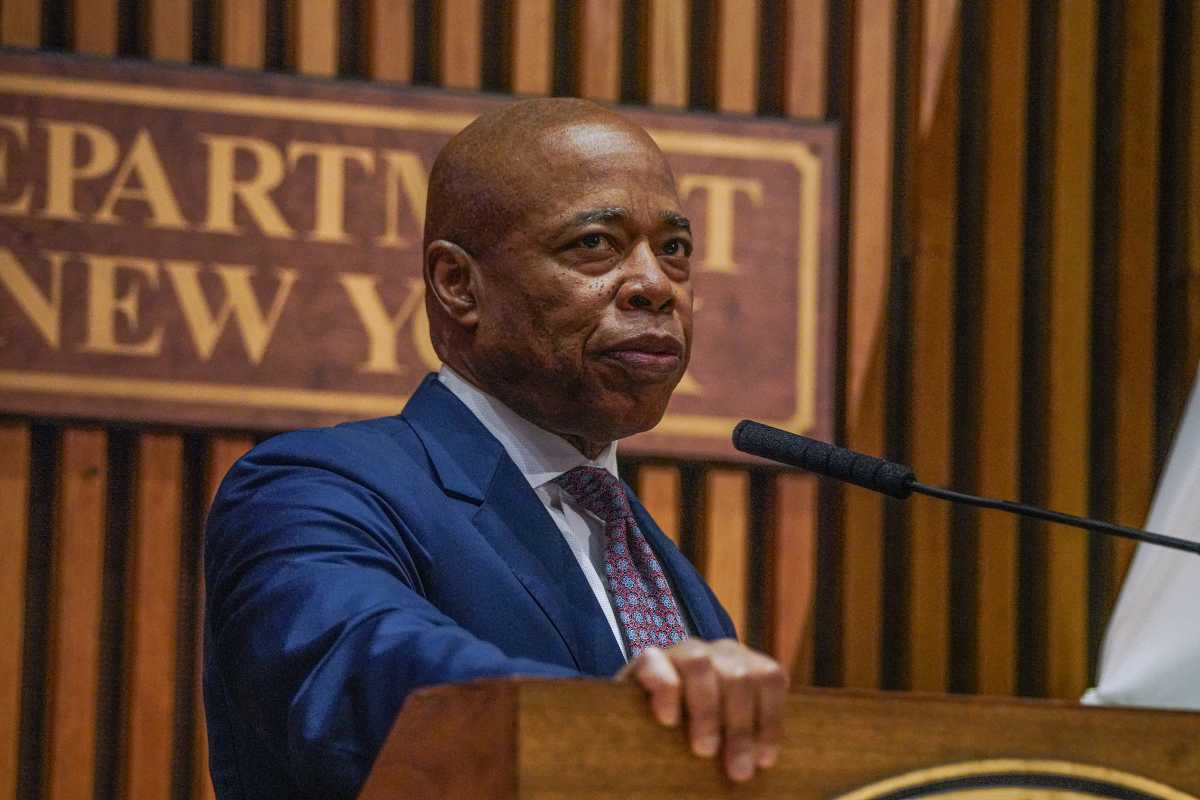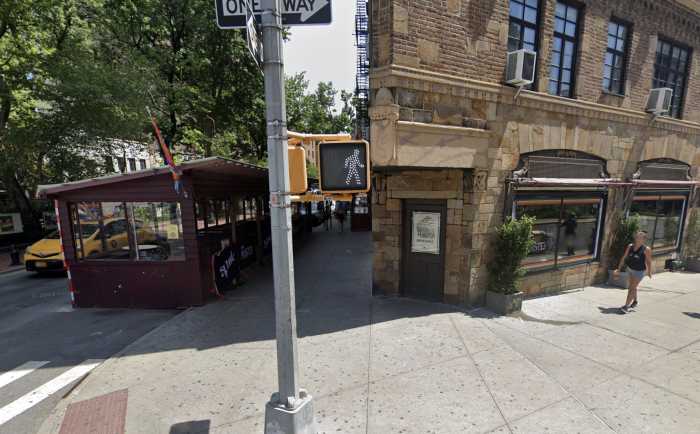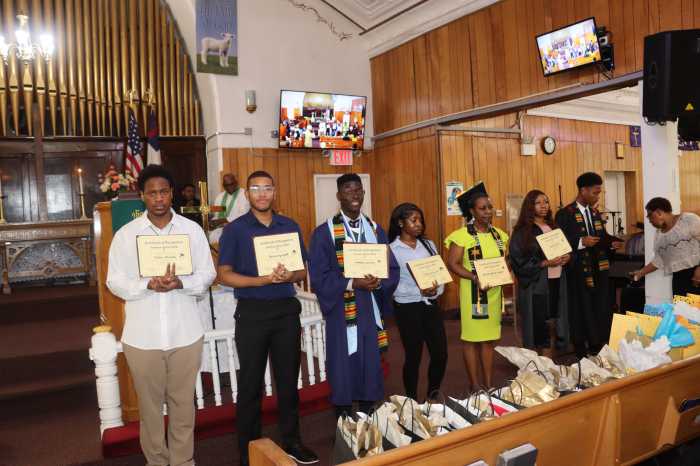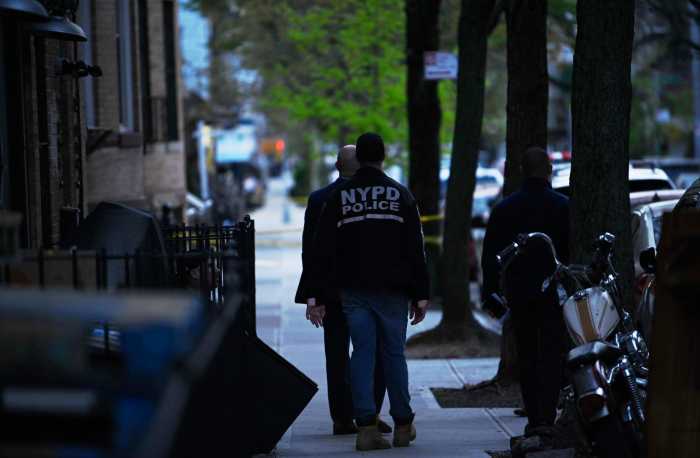While the Brooklyn Museum of Art has been
both critiqued and celebrated the last couple of years for exercising
their First Amendment rights, the institution dramatically revealed
its patriotic streak Wednesday by lifting its admission fee and
unveiling a newly reinstalled American art collection, "American
Identities."
Museum director Arnold Lehman made the decision to go ahead with
opening the new installation, as scheduled, Wednesday night and
waved the museum’s admission fee from Sept. 12 through Sept.
16, for those seeking sanctuary from the ubiquitous media coverage
of Tuesday’s tragedy at the World Trade Center.
"In this instance we didn’t even want people to contemplate
putting their hand in their pocket, just come," said Lehman.
On Saturday, it was clear that the horrific attack on the towers
had necessitated that the museum take additional measures: police
officers stood guard outside the museum; visitors were made to
walk through a metal detector and their bags were searched; and
"helping us all cope" packets of emergency services
information were on a lobby table. And of course, the American
flag facing Eastern Parkway hung at half-mast.
"People are looking at the museum for solace, to think about
other things, to bring their children, to bring them – for a
brief time – away from the day-to-day horror we’re seeing on
TV and hearing on the radio," explained Lehman. "This
was an opportunity for people to have some reflective moments,
looking at the history of America as seen through its art and
decorative arts and to reflect."
Lehman said that the reinstallation allows visitors to "witness
here the best of humanity when outside there was too much of
an opportunity to witness the worst."
New ’Identities’
The "American Identities" exhibit showcases hundreds
of works by American artists from the Brooklyn Museum’s collection.
The artwork spans several centuries, from the colonial era, through
the American Revolution to the Civil War to the present. It features
the works of all kinds of hyphenated Americans: French-Americans,
African-Americans, Spanish-Americans. The artwork is inspired
by many American regions. The "orientation section"
features only works created in Brooklyn (Francis Guy’s 19th-century
"Winter Scene in Brooklyn") or by Brooklyn artisans
(a basket woven by one of the last Canarsee Indians).
"There isn’t one history in America; there are multiple
histories," said Lehman. "The exhibition also goes
many steps forward in terms of allowing everybody to participate
in that history whether you are white, African-American or Native
American.
"We saw this installation as an opportunity to be reflective
of a bigger picture. It’s one of the reasons why the title is
’American Identities,’ rather than ’American Identity,’"
he said. "It’s reflective of the rich layering of our culture
in America."
For Brooklyn Museum of Art project director Teresa Carbone, "American
Identities" is the culmination of 16 months of work and
involved the resources of every museum department.
"It’s an exciting exhibit, designed in an energetic way.
It invites [visitors] to stay a long time," Carbone said
of the exhibition’s design by Matthew Yokobosky, which accents
the artwork with brightly painted walls and a stars-and-stripes
motif on explanatory cards.
"It’s meant to be a real celebration of ideals and diversity
and of this unique American spirit that has been so well documented
in our collection for a very long time, starting from early colonial
to very recent contemporary works," said Carbone. "It’s
a wonderfully thorough collection, and it’s a very celebratory
view of American culture."
While this weekend the admission fee will be back in effect,
Lehman, who says that he too knows some of the missing amid the
World Trade Center rubble, suggests that the museum be thought
of as a respite for the community during the anguish-filled weeks
ahead.
"Of course it’s always been just a suggested [admission]
fee. We’re always here for people who want to come in, if they
want to pay the full fee, not pay, or want to give a contribution,
we’re here for everyone in the community," said Lehman.
"Indeed, from what I understand a number of people have
commented they were so happy to have had an opportunity to have
a kind of reinforcement about America."
Many firsts
Not only is the exhibit on display in the museum’s newly created
Luce Center for American Art, but it’s also an opportunity to
show off the museum’s new purchases, said Carbone. "It’s
an opportunity to bring out a lot of new acquisitions, especially
in decorative arts, that have never been on view before.
"We brought out paintings which haven’t been out in a while,
and we brought together works that have never been together,
such as two major works from the Pierrepont house: the great
[portrait of] George Washington and the empire gilt pier table
by Charles Lannuier. They are quite a spectacular pair."
In "A Nation Divided," the exhibit section addressing
the Civil War, hangs Eastman Johnson’s "A Ride for Liberty."
Johnson’s 1862 painting depicts a man, child and woman galloping
away on a horse, the woman looking fearfully over her shoulder.
It’s emblematic of what Americans have already overcome, and
a grim reminder that there are still fearsome entities that threaten
our freedom.
"Also, never out before, is a stained glass window – a model
for a large window for Plymouth Church of the Pilgrims – of Quaker
William Penn, an early abolitionist," said Carbone.
Designed by Frederick Stymetz Lam (1863-1928), "Presentation
Window, William Penn, Peace Movement, Pennsylvania" was
created in 1905 as a model for a larger work that was installed
in Plymouth Church of the Pilgrims in Brooklyn Heights.
Also on display in "A Nation Divided" is Hiram Powers’
startling 1869 white marble sculpture, "The Greek Slave,"
which came to be interpreted as an expression of anti-slavery
sentiments. It is, in fact, an arresting, neoclassical female
nude with shackled hands. No matter what decade or century, the
statue encourages the viewer to protect the notion of freedom
for all people, regardless of gender.
Other highlights on display, according to Carbone, include "our
beautiful head of Lincoln by Augustus Saint-Gauden and a very
large bronze relief of a Victory figure from the Shaw memorial.
It was the first black regiment raised in the North, celebrated
in the movie ’Glory.’"
Contemporary works addressing the Civil War include "prints
by African-American Kara Walker who does very challenging subject
matter, revising the narrative of the Civil War in a radical
way," said Carbone. "We’ve done a lot that – inserting
contemporary works within historical hanging as a way of inserting
commentary."
The exhibition goes beyond hanging works that cover the same
topic together; it also combines works created at the same time,
from different parts of the continent. Carbone explains, "The
collection of American paintings and sculpture [are hung] alongside
related Spanish Colonial, Native American and decorative arts
holdings.
"It’s a total resetting of our collection," she said,
adding that the museum’s American art collection is ranked among
the top five in the world. "It’s meant to combine objects
in new ways, to create more of a cultural context, and to allow
them to speak more actively about the times and the issues that
were involved."
The icons
Carbone refers to some "icons of our collection" and
wants to reassure museum-goers that famed works are back on display
– like "the Bierstadt." Albert Bierstadt’s "A
Storm in the Rocky Mountains Mt. Rosalie" was painted
in 1866 in his New York studio after he made studies in Colorado
of a Native-American encampment in the midst of a majestic, sweeping
landscape.
"People should realize their old favorites are on view,"
said Carbone. "We were careful not to remove every old friend
– as some people come back to see their favorites."
Other icons include Gilbert Stuart’s "George Washington"
and Georgia O’Keefe’s "Brooklyn Bridge," both on display.
"People are going to be hard-pressed to feel good about
diverting themselves, and at the same they really need to,"
said Carbone. "The museum is a safe place to be and to find
a way to think about things and spend time with their family
and friends."
Lehman agreed, saying, "We’re in a moment in our history
when it’s tough to get out of chair and away from television,
so we felt quite privileged that people chose to come into the
museum – young people, older people with young children – the
first day.
"So if this installation has helped in some way, or touched
in some way their hearts and minds – this is what cultural institutions
can do. We want to help people enjoy themselves, but it’s equally
important to let people be reflective."
"American Identities: A Reinterpretation
of American Art" is on display now at the Brooklyn Museum
of Art, fifth floor (200 Eastern Parkway). Admission is $6, $3
students and free to members. The museum is open Wednesday through
Friday, 10 am to 5 pm; Saturday and Sunday, 11 am to 6 pm. For
more information, call (718) 638-5000.


